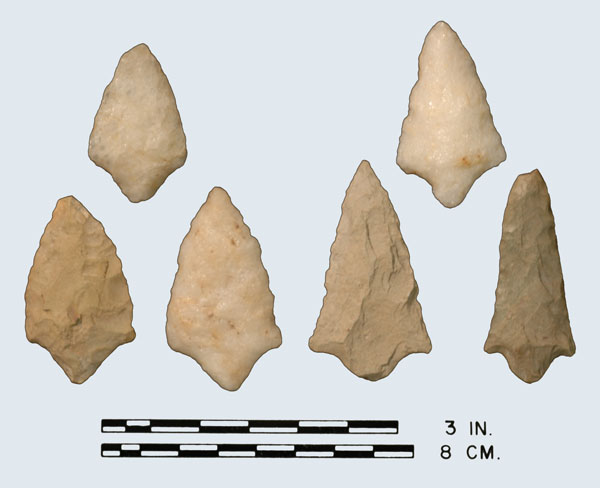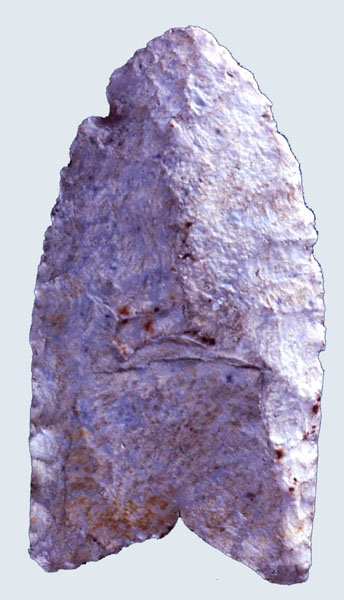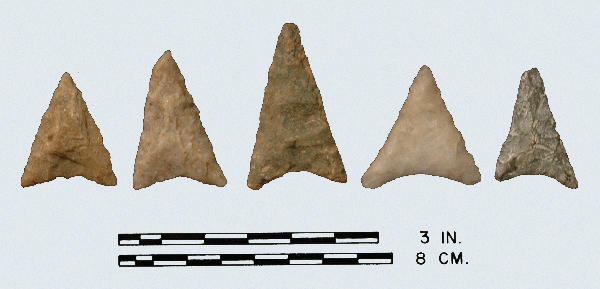
Morrow Mountain I: Top Row: both quartz; Bottom Row: tuff, quartz, tuff, tuff.
Type Tapering Middle-Archaic
Defining Attributes
The Morrow Mountain I point has a broad triangular blade with a short pointed (tapering) stem.
Chronology
The Morrow Mountain I point dates to the Middle Archaic period, 5100 to 4500 BCE. Coe (1964) noted that at the Doerschuk Site in the Piedmont of North Carolina, the Morrow Mountain I point type occurred stratigraphically higher than the Stanly, and lower than the Guilford. McAvoy (1997) obtained a radiocarbon date from the Cactus Hill Site in Sussex County, Virginia of 4850 +/- 130 BCE for the Morrow Mountain I type. McAvoy suggests a time span of 5100 to 4800 or 4700 BCE for this type.
Description
- Blade: The blade is usually broad and triangular. Sides are most commonly slightly rounded; some examples have straight or slightly concave sides. Serration along the sides is faint and irregular. The greatest width of the point occurs at the shoulder.
- Base: The base is pointed (tapered).
- Size: Length ranges from 30 to 70 mm with an average of 45 mm. Width ranges from 22 to 45 mm with an average of 30 mm. Thickness ranges from 3 to 6 mm.
- Technique of manufacture: The larger points appear to be the result of direct percussion and, in general, were crudely made. Smaller points were all finished by pressure flaking and are very symmetrical in form. Some examples have slight grinding along the edge of the shoulder and stem.
Discussion
According to Coe (1964) the Morrow Mountain I form has a wide distribution over most of North America, but, with a few exceptions, its age and association are unknown. Morrow Mountain I is the earliest representation of a taping stem point in the mid Atlantic region. Some form of taping stemmed point continued or reappeared over a period of six thousand years, ending with the Rossville/Piscataway of the Woodland period.
Defined in Literature
Coe (1964) originally defined the type based on points recovered from the Doerschuk Site in the Piedmont of North Carolina. .
References



